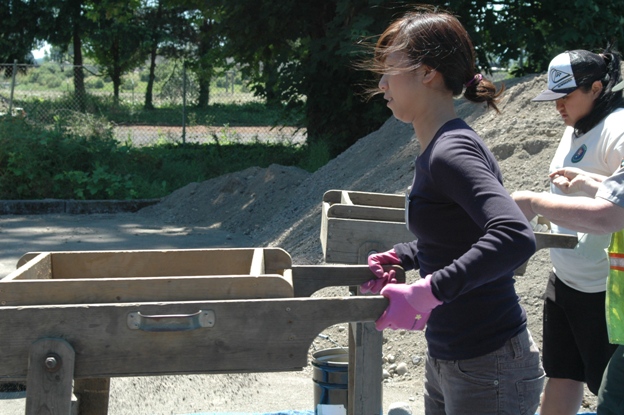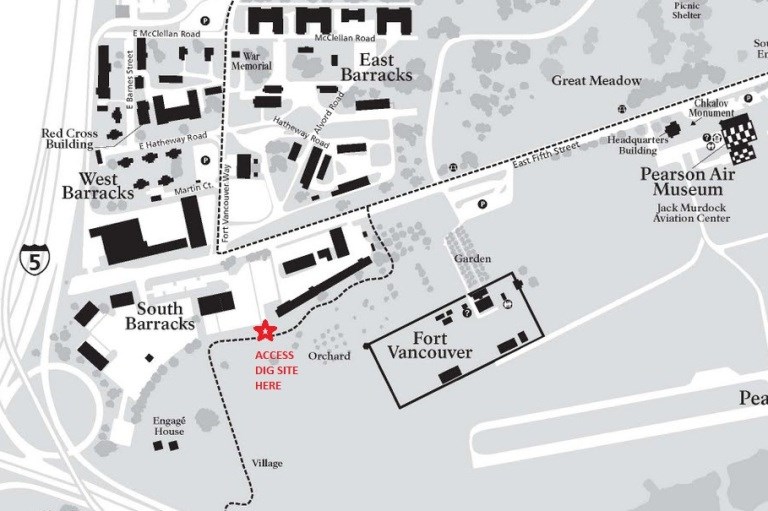|

NPS PHOTO
Contact: Doug Wilson, (360) 921-5241 Starting Saturday, June 23, the National Park Service will open up the South Vancouver Barracks to the public at the Fort Vancouver Village site. The National Park Service, Portland State University, and Washington State University Vancouver are inviting the public in behind the chain link fences of South Barracks to visit the 11th Public Archaeology Field School at Fort Vancouver. "This is the first time that the public will have been able to see this portion of the Village since the mid-19th century," said Doug Wilson, National Park Service Archaeologist and Adjunct Associate Professor at Portland State University, "Prior to this it was a closed area of the military base." The National Park Service and university staff will be working with college students from across the Pacific Northwest as part of a multi-year project in the Village that started in 2010. "We began planning for work in the Barracks last fall as the timetable for the relinquishment from the Army to the National Park Service became finalized. We are pleased to provide this unprecedented chance for the public to see citizen scientists conducting research on the history of Vancouver's first neighborhood as it is uncovered," said Wilson. "The project will help the park to protect and interpret these sensitive cultural resources." The field school will be working at three house sites that represent a cross-section of the diversity of early Vancouver. One site, the home of "Little Proulx", was a French Canadian who was married to a Chinook Indian woman named Catherine. Another is the house site of William Kaulehelehe, perhaps the most famous of the Native Hawaiians who lived at Fort Vancouver. Visitors will also see some of the grand heritage trees that were planted by General Nelson Miles during the 1880s. "These living testaments to the history of the post are the bookends to those on Officers Row and formed the original entrance allée into the Fort," said Wilson. The site will be open to the public on Saturday, June 23rd, and then Tuesdays through Saturday through July 28. It will be also be open August 8 through September 1 on Wednesdays, Fridays, and Saturdays during a dig with the Oregon Archaeological Society. Directions: The dig site at South Barracks can be accessed north of the Discovery Trail just east of the Fort Vancouver Village. People needing accessible accommodation, please contact ahead of time. Cost: free Background: The Fort Vancouver National Historic Site brings together a national park, a premier archaeological site, the region's first military post, an international fur trade emporium, one of the oldest operating airfields, the first national historic site west of the Mississippi River, and a waterfront trail and environmental center on the banks of the Columbia River. The partners of the Fort Vancouver National Historic Site teach visitors about the fur trade, early military life, natural history, and pioneers in aviation, all within the context of Vancouver's role in regional and national development. The park's vast array of public programs -- including living history events, festivals, cultural demonstrations, exhibits, active archaeology, and other special activities -- create a dynamic, fun, and unique tourist destination for people of all ages. -NPS- 
|
Last updated: February 28, 2015
